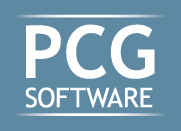On April 16, 2015, the Medicare Access and CHIP Reauthorization Act of 2015 (MACRA) became law. Among its provisions, the law touted a permanent “doc fix” that repealed the sustainable growth rate (SGR) formula, which triggered annual automatic fee schedule cuts in Medicare physician pay and temporary Congressional patches.
Designed to improve physician payment, MACRA is a step in the right direction, and certainly better than the alternative, but it’s not magic and it’s not enough. The act overrode the 21% pay cut due April 1, 2015, but it only provided a 0.5% annual pay increase starting June 1, 2015, for physicians and non-physician practitioners for 5 years. After 2019, there are no increases for 5 years. That doesn’t sound like a permanent, sound solution to me. Plus, can a paltry half-a-percent pay raise make a significant difference in physicians’ ability to take care of Medicare patients and maintain healthy practices? Physicians shouldn’t be happy about a raise that size, and they should demand better.
There is no language in the 300-page MACRA to finance repealing the payment formula. The Congressional Budget Office estimates the SGR overhaul will cost $175.4 billion between 2015 and 2025. MACRA will increase the budget deficit by $141 billion, saddling future generations with even more national debt in the trillions. The bulk of the offsets will be derived from Medicare reimbursement cuts to hospitals and post-acute care providers and increased beneficiary cost sharing, including elderly workers paying a greater share of Medicare Part B and Part D premiums.
To read the full article, visit the AJMC.





